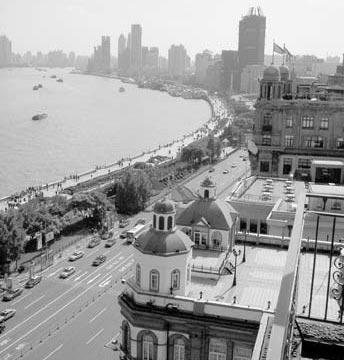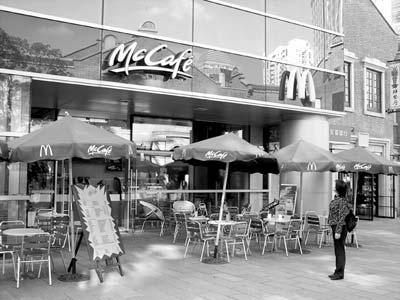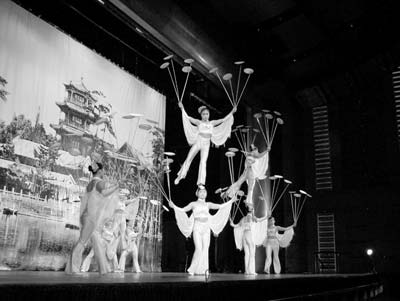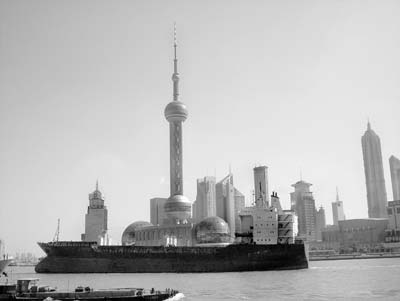China adventure, Shanghai surprises and beyond
by Randy Keck (First of three parts, jump to part 1, part 2, part 3)
Since I had done some advance research, it is a fact that I had expected a lot from my initial exposure to Shanghai on my first visit to China, in November 2005. It is also a fact that my expectations were exceeded on numerous fronts.
My 15-day journey, as a guest of Value World Tours, began with three days in Shanghai, the huge (population 13 million), booming, progressive shining star of China’s explosive economic revolution.
If I had to pick a single word to describe my reaction to Shanghai in 2005, it would be “scary.” China and especially Shanghai have developed at an incredible pace over the past 10 years and by all appearances seem to be on a fast track to potential economic dominance not only in Asia but perhaps globally. More on this later.
Shanghai sights delight
There was ample opportunity in our group itinerary to do traditional Shanghai sightseeing, enjoy free time exploring on our own and get accustomed to a healthy daily diet featuring the many varieties of fresh Chinese vegetables served at all meals. A meal Stateside no longer seems complete without fresh steamed bok choy.
My sightseeing favorites included day and evening strolling along The Bund, the famous Shanghai riverfront, and a cruise on the Huangpu River, one of the busiest commercial waterways on the planet.
From the water, the visuals proved to be a photographic Mecca, with the riverfront skyline of historic Shanghai along The Bund to the west contrasted with the modern high-tech and highrise development miracle of Pudong on the opposite shore. This water highway connector to one of the world’s busiest ports was awash with, at times, bumper-to-bumper commercial craft of all sizes, manner and description.
While the temples and squares of the Old City are on most visitor itineraries, one should be prepared for the hordes of tourists, which can somewhat dilute the experience. The historic French Concession area has been redeveloped by rehabilitating many of the older buildings that now house trendy offices, sidewalk cafés, restaurants and shops.
This is where some of our small group experienced the offerings of a U.S. import, McCafe, featuring limited coffee culture fare instead of forgettable fried burgers. I could not resist testing the McCafe crew with a request for a dry cappuccino, and the result was admittedly respectable.
Cultural gleanings
Sometimes the little behind-the-scene exposures of touring can provide true cultural insights. So it was for me with our visit to the Children’s Palace, an after-school institute of training in the arts and athletics for children between the ages of five and 12.
The now-long-entrenched “one child policy” in China has resulted in the tendency of the one child in each family to become the sole focus of parental achievement aspirations. The after-school institutes are now increasingly popular in cities throughout the country. In addition to providing various skill-training programs, they offer additional socialization opportunities for children, thereby compensating for the lack of siblings in the home environment.
While it is hard to imagine such a dictated restrictive policy scenario existing in Western cultures, the Chinese seem to have, of necessity, made it at least mostly work.
Walking Shanghai
Traveling on foot westward from The Bund through the commercial shopping maze of Nanjing Donglu, one arrives at the cultural center of Shanghai, Renmin Square, also known as People’s Square. Renmin features a clash of old and new plus, at times, the uneasy visual blending of Eastern and Western styles.
The landmarks of the Square are the impressive Shanghai Museum, the Shanghai Grand Theatre, City Hall and the must-see Urban Planning Centre, which features an enormous diorama of Shanghai’s present and future. The scale and scope of current and future planning and development of the city and surrounds on display at the UPC are mind-expanding beyond conveyance. The coffeehouse on the top floor offers a relaxing respite for tired feet and pleasant views over Renmin Square.
The most impressive views over the square and surrounding city area, however, although not widely known, are from the 38th floor reception and lounge area of the Marriott Hotel. The view is easily worth the effort, in my opinion.
Navigating Shanghai (and the other Chinese cities as well) as a pedestrian, one must remain ever vigilant. It’s not autos that necessitate this vigilance as much as the hundreds of thousands of bicycles flowing in constant unison, performing a rim-to-rim ballet that requires a cooperative blend of perfect timing and space awareness.
All highrises are not created equal
Asia in general and Shanghai in particular seem to have elevated (no pun intended) the construction of incredibly stylish highrise buildings to an art form.
The 87-floor Jinmao Tower in Pudong, home of the Grand Hyatt, from where I enjoyed breathtaking 360-degree night-light views of the city from the top-floor viewing platform, has seemingly set the standard. During my visit to the Jinmao Tower I learned, perhaps not to my amazement, that the world’s latest tallest building is under construction a very short distance away.
Value World Tours’ choice of hotel in Shanghai, the highrise Salvo, was lauded by our group not only for its quality, including the most comfortable beds some us had ever experienced, but also for its user-friendly foot-power location between Renmin Square and The Bund riverfront.
The surface merely scratched
I won’t pretend to have become intimate with Shanghai in this first exposure of but a few days. Shanghai is equally transparent and complex and evolving on so many levels simultaneously, it remains impossible to define. It is, however, perhaps the best place to experience the broad scope of China’s economic awakening. Next time around I hope to venture farther afield to explore some of the area attractions outside of the city.
To be certain, I was blown away by China’s degree of expanding affluence and the clear trickle-down effects. High fashion and luxury automobiles were but two of the tell-tale indicators on display in seeming abundance not only in Shanghai but in all the large cities we visited.
Little things can also make big impressions. There was an abundance of high-end coffeehouses featuring 4-dollar lattés, and they seemed to be thriving.
Final thoughts
China has a population of over 1.3 billion, over four times that of the USA, and it is managing its economic transcendence without providing welfare services. The cost of medical services continues to be within the reach of the masses, however.
The Chinese work harder, exercise more, have a much healthier diet and, despite comparable rates of smoking among the male population, are generally fit and trim compared with the population in the U.S. in its current state of rampant obesity and legal, medicinal drug dependency. Certainly, in terms of healthy living, we would do well to take notice and realize that today we have more to learn from them than they do from us.
Wuhan
The second stage of our China journey began with a flight to the attractive river city of Wuhan. We visited the local Museum of Ancient History, where we heard a traditional bell concert, and later continued on to the former retreat/residence of Chairman Mao built in 1985. While located on beautiful grounds, the buildings are now quite run-down — a seeming indicator of the new China’s change of ideological heart and direction.
In the evening our tour director, Sheila, arranged an optional tour to the impressive new Hangiang River promenade followed by a wonderful 1_-hour traditional foot massage at a local parlor. The massages, received while fully clothed sans footwear, certainly focused on the feet but included the whole body. It was blissful relaxation for all at the bargain price of $18 each.
The following day we drove through countryside strewn with rice paddies, stopping in Shashi to visit a unique history museum. On arrival in the port town of Yichang, we strolled through an outdoor street market then dined at a posh local resort restaurant before boarding our ship, the Victoria Star, for our 5-day/4-night cruise of the Yangtze River. Part two of my China report will focus on our Yangtze River cruise.
China information
For more information on China tours and river cruises, contact Value World Tours, 17220 Newhope St. #202, Fountain Valley, CA 92708, phone 800/795-1633, e-mail cruises@vwtours.com or visit www.rivercruises.net.
Keck's Beyond the Garden Wall
❝The energy generated by a sea of humanity,
Conjoined in common economic purpose,
Unbound by illusionary perception of entitlement,
May with thoughtful intent and purpose
Be of luminous beneficience to friends
Yet great chagrin to those of strictured pause. ❞
— Randy reflecting on his initial impression of Shanghai and China’s boundless energy





